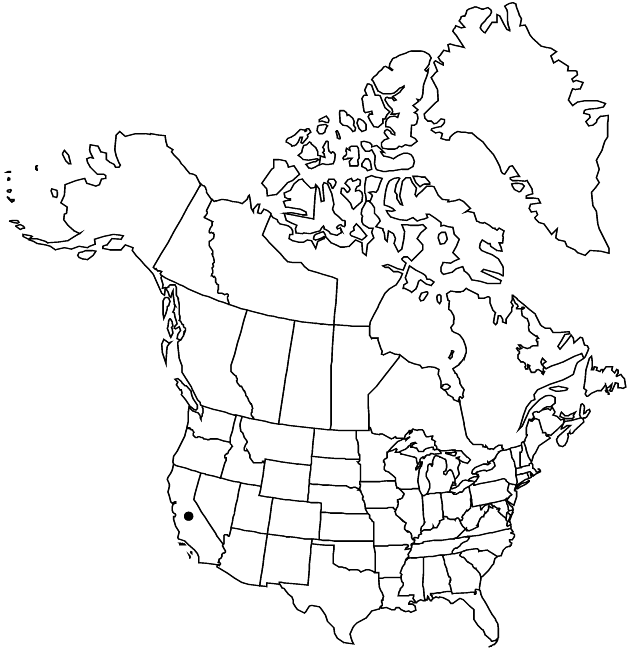Brickellia knappiana
Pittonia 1: 260. 1888.
Shrubs, 100–200 cm. Stems (arching) branched from near bases, gland-dotted. Leaves alternate; petioles 4–5 mm; blades 3-nerved from bases, lance-ovate to lanceolate, 10–35 × 1–16 mm, bases acute to attenuate, margins dentate to serrate, apices acute to acuminate, faces densely gland-dotted and sparsely pubescent (not shiny). Heads in paniculiform arrays. Peduncles 2–5 mm, densely glandular-pubescent. Involucres cylindric to narrowly campanulate, 6–9 mm. Phyllaries 18–22 in 5–7 series, greenish, 3–4-striate, unequal, margins scarious (apices acute to acuminate); outer lance-ovate (sparsely puberulent, gland-dotted), inner lanceolate (glabrous). Florets 5–7; corollas white, 5–6.5 mm. Cypselae 2.5–3, puberulent to sparsely pubescent; pappi of 28–32 white, barbellulate bristles.
Phenology: Flowering Sep–Oct.
Habitat: Gravelly washes
Elevation: 700–1700 m
Discussion
Of conservation concern.
Brickellia knappiana is found only in the mountains of eastern California. It is noted as a possible hybrid between B. californica and B. multiflora. Collections from mixed populations of B. knappiana and B. californica have been noted on herbarium specimens.
Selected References
None.
